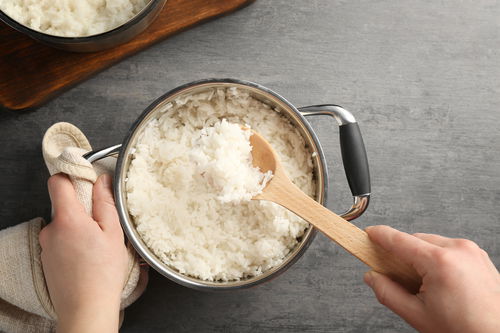2 have already made this dish!
The preparation:
-
Take the salmon fillets and pour sake generously over them.
-
If you like, you can remove the bones, but this is not strictly necessary.
-
Let the salmon marinate in sake for 10 minutes.
-
Then pat the fillet dry with kitchen paper.
-
Now salt the skin first, then both sides of the salmon.
-
Now it’s ready for cooking. It tastes best when grilled, but it can also be baked in the oven. Bake at 180 degrees Celsius for about 8 minutes.
-
Season again and your Shiozake is ready!
Table of contents:
Another simple yet incredibly delicious dish of Japanese cuisine. The preparation is child's play, but it tastes like a delicacy.
When do you eat Shiozake?
Shiozake can be eaten on many occasions. It is a popular side dish in Bento Boxes, goes very well with Onigiri rice cakes and should not be missing from a classic Japanese breakfast. Other side dishes for a Japanese breakfast are eggs, vegetables and rice. Here you will find more information about a typical Japanese breakfast:

The Japanese love fish and know many different ways to prepare it. For salmon, Shiozake is probably the favorite way to prepare it. You can see it as a kind of Japanese bacon. There is also ready-salted salmon available, which you only need to heat up for 25 minutes before eating.
Where does the name Shiozake come from?
As with many Japanese dishes, the name is derived from the individual ingredients of the dish. “Shio” means salt and “Zake” means salmon. There are also the names “Shake” and “Jyake” for salmon, which both sound similar. The different names for salmon probably come from different dialects of the individual Japanese islands.
What ingredients do you need for Shiozake?
As the name suggests, you mainly need salmon and salt. The salmon should be as fresh as possible and of good quality. If you can't get fresh salmon, then frozen fillets that you thaw beforehand are also sufficient. We recommend high-quality sea salt as the salt. And the third important ingredient is sake, Japanese rice wine, in which the salmon is marinated. In Japan, Shiozake is usually not made at home, but bought ready-marinated and pickled from the supermarket.
How much salt should I use?
You should use about 5% of the weight of the raw salmon as salt.
How long does Shiozake last?
The prepared salmon can be frozen very well and thawed later. It is best to make a larger quantity and freeze it, saving you some work next time you want to eat Shiozake.
What side dish goes with Shiozake?
You probably already guess the answer. Japanese, short-grained rice goes best with this grilled dish. If the rice doesn't work out for you yet, take a look at this post. There we have put together some tips for the perfect rice, as well as instructions for cooking with and without a rice cooker, for you.




Comments